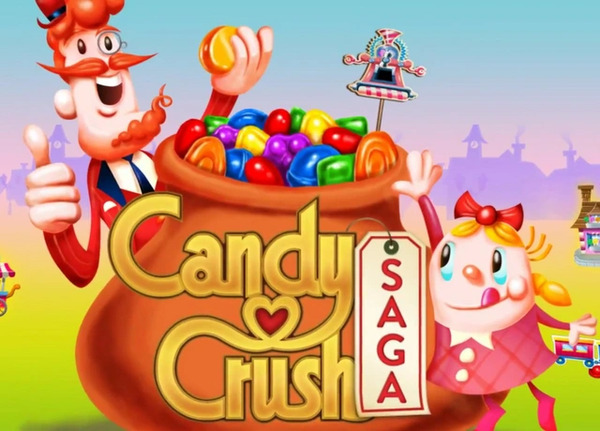Ready or Not is a first-person tactical shooter developed by Void Interactive, and it's quickly become a standout title for players who crave realism and strategy in their shooters. Released in early access in 2021, Ready or Not takes inspiration from classic SWAT games and modern military tactical operations. With its intense combat, strategic gameplay, and realistic approach to law enforcement operations, Ready or Not appeals to players who want more than just run-and-gun gameplay.
Unlike most modern shooters where action and reflexes reign supreme, Ready or Not emphasizes careful planning, coordination, and tactical execution. Players assume the role of a SWAT officer, tasked with neutralizing hostile situations ranging from active shooters to hostage rescues, and it requires a delicate balance of real-world tactics, decision-making under pressure, and precise execution.
In this article, we’ll explore what makes Ready or Not such a compelling and immersive tactical shooter, diving into its gameplay mechanics, realism, teamwork elements, and the overall experience it provides for players.
1. Tactical Realism: What Sets Ready or Not Apart
The primary attraction of Ready or Not is its commitment to realism. While many first-person shooters focus on fast-paced action, Ready or Not sets itself apart by offering a more methodical, tactical approach. Players must consider every move carefully, and one wrong decision can lead to mission failure.
Realistic Combat and Firearms Handling
One of the core features of Ready or Not is its authentic combat mechanics. The game takes a realistic approach to firearms, movement, and even environmental interaction. Whether you’re breaching a door, aiming down sights, or securing a hostage, every action is designed to simulate real-world police tactics.
-
Firearms Handling: Unlike arcade shooters where you can quickly spray bullets, Ready or Not emphasizes precise aiming, controlled bursts, and real-world ballistics. Weapons have recoil, weight, and handling characteristics that affect how you fire them. Players need to learn how to manage their weapons properly, taking into account factors like stance, position, and movement.
-
Breaching and Entry Tactics: Each room you clear, each door you breach, and every hallway you patrol demands a tactical approach. The game allows players to use different methods of breaching, including forced entry with tools like the battering ram or a more subtle approach with gadgets like flashbangs. Every tactical decision you make will directly affect how a mission plays out.
-
Realistic Gunplay: In Ready or Not, shooting is methodical. You’ll need to carefully clear rooms, taking cover and using proper shooting stances. It's not about spraying bullets but controlling your fire to eliminate threats effectively while keeping yourself and your team safe.
AI Behavior and Enemy Tactics
The AI in Ready or Not is smart and unpredictable, adding another layer of realism. Enemies react to your presence, and they may attempt to ambush you, take hostages, or surrender when confronted with overwhelming force. Civilians, too, play a role in the realism — they can be innocent bystanders, potential hostages, or uncooperative subjects.
-
Hostage Situations: You’ll often find yourself in situations where there are civilians or hostages at risk. In these scenarios, it’s crucial to balance force and restraint. Shooting innocent civilians or using excessive force can cause mission failure, while being too lenient could allow the enemies to escape or harm the hostages.
-
Dynamic Threats: The game’s AI reacts to your team’s movements, trying to surprise you or escape when it has the chance. This creates a tense atmosphere where you can never truly relax, knowing that the enemy might strike at any moment.
2. Mission Design: Diversity and Complexity
Unlike traditional shooters where you simply “eliminate all enemies,” Ready or Not features missions with complex objectives and scenarios. Some missions require you to neutralize armed suspects, while others ask you to secure and extract hostages. These objectives are often set against a time limit, adding additional pressure to an already tense experience.
Varied Scenarios and Environments
Missions in Ready or Not are highly varied, ranging from urban environments to domestic settings. Each map is carefully designed to provide a different tactical challenge, whether it’s navigating through tight, cluttered rooms, or clearing large open areas.
-
Urban Combat: Many missions take place in urban environments, such as hotels, offices, or apartment buildings. These locations often have narrow hallways, lots of rooms to clear, and multiple floors, which makes them perfect for close-quarter battles and high-stakes entries.
-
Hostage Rescue: One of the core objectives in Ready or Not is rescuing hostages. These situations are tense because you need to clear rooms carefully, avoid civilian casualties, and defuse dangerous situations quickly. Time is often critical, and any hesitation or misstep could result in casualties.
-
Terrorist Activities: In some missions, you will face armed criminals or terrorists who are actively engaging in violent acts. Clearing these dangerous areas without causing harm to hostages or civilians requires careful planning and precision.
Progression and Replayability
In terms of progression, Ready or Not offers a variety of missions, and players can tackle these objectives solo or with a team. Completing these missions successfully unlocks new weapons, equipment, and character upgrades. The game also features procedurally generated levels, which increases replayability by introducing new challenges and layouts with each playthrough.
-
Increasing Difficulty: The game’s difficulty increases as you progress, with missions becoming more complicated and enemies becoming more unpredictable. On higher difficulty levels, you’ll need to coordinate with your team more effectively and utilize advanced tactics to survive.
-
Multiple Approaches: There is no single “right way” to complete each mission. While some prefer a stealthier approach, others might want to go in loud and fast. The game's flexibility allows you to tailor your strategies to your playstyle and the situation at hand.
3. Teamwork and Coordination: SWAT at Its Best
While Ready or Not can be played solo, the game truly shines when played with a team. The game's reliance on strategic planning, communication, and coordination makes it perfect for squad-based play. Whether you’re coordinating a breach, covering a teammate’s back, or executing a hostage rescue, teamwork is essential to success.
Squad-Based Play
In Ready or Not, players can form teams of up to five members, and each member can take on a different role in the operation. You can assign roles like Pointman, Breacher, or Marksman, and each role comes with specific duties and equipment. Communication is key — whether you're using voice chat or command menus, your team must stay in sync to avoid deadly mistakes.
-
Roles and Specialization: As a team, you’ll need to specialize. For example, a Breacher might be tasked with forcing open doors, while the Pointman takes the lead in clearing rooms. A Marksman can provide cover from long distances, picking off targets that your team encounters from a distance.
-
Covering Your Teammates: One of the most important tactical elements is ensuring your teammates' safety. The game encourages you to watch each other’s backs, provide covering fire, and help each other out in times of danger. A single mistake in this kind of environment can mean the difference between life and death.
-
Team Voice Communication: Voice chat is essential for coordinating with your team. Clear, concise communication ensures everyone is on the same page. Miscommunication can easily lead to friendly fire, failed objectives, or mission failure.
AI Team Members and Solo Play
For solo players, Ready or Not also includes AI-controlled teammates. These AI teammates are useful for tackling difficult scenarios where you might need backup, but they are not as reliable as human players. However, they still provide additional support, and players can issue commands to their AI teammates to assist with specific tasks.
-
AI Behavior: While the AI is competent, it’s not perfect. It can sometimes struggle with more complex scenarios or get caught in awkward positions. However, the developers continue to update and improve the AI’s behavior, making it more capable over time.
4. Visuals and Audio: Immersive Environments
The visual and audio design of Ready or Not plays a huge role in its immersive experience. The game offers highly detailed environments that feel authentic and alive. The lighting, sound design, and environmental effects combine to create an atmosphere that keeps players on edge.
Realistic Environments
Each map in Ready or Not is meticulously crafted, from the dimly lit hallways of a high-rise building to the cluttered rooms of a suburban home. The attention to detail in these environments makes the game feel truly immersive.
-
Lighting and Shadows: The lighting system is a key element in Ready or Not. Dimly lit areas and flashing lights create an atmosphere of suspense, where players must rely on flashlights and night vision goggles to navigate.
-
Environmental Sound: The sound design is another standout feature. Footsteps echo down hallways, doors creak open, and distant gunfire can be heard in the background. Every sound is designed to create tension, making you feel like you’re truly in the midst of a dangerous operation.
Audio Cues and Realism
Audio cues are critical to gameplay. You’ll often rely on sound to gauge the position of enemies or identify the presence of civilians. Sound design is particularly crucial during stealth operations or when trying to avoid detection.
-
Voice Lines and Communication: The game features voice lines from both your teammates and the enemies. You may hear the enemies shouting warnings or making demands, which helps you gauge the situation and make informed decisions.
5. Conclusion: A Tactical Shooter for the True Strategist
Ready or Not delivers an authentic, tactical shooter experience that focuses on realism, strategy, and teamwork. With its realistic combat mechanics, immersive environments, and emphasis on coordination, it provides a unique and rewarding experience for players who appreciate tactical shooters. While it’s not for everyone, Ready or Not offers a depth of gameplay and realism that few other games in the genre can match.
Whether you’re a fan of tactical shooters or just looking for something more cerebral and methodical than your typical fast-paced FPS, Ready or Not is a game that challenges both your skills and your ability to think critically in high-stress situations. For those who crave authenticity, there’s no better experience.




























